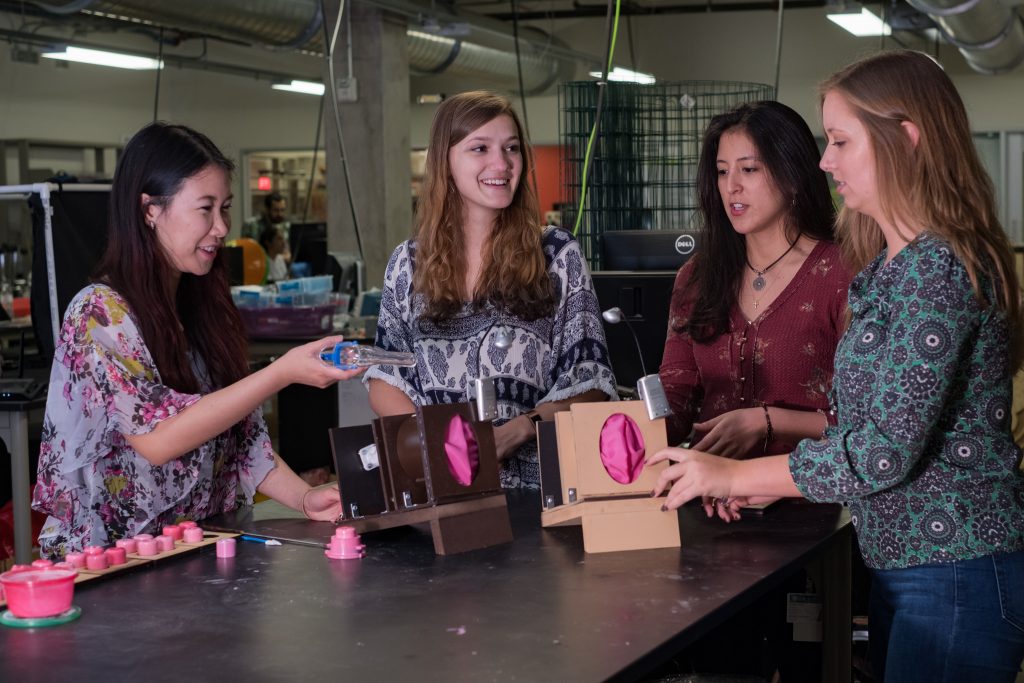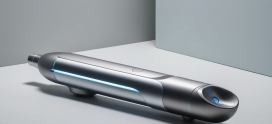
Rice Students Target Rate Of Cervical Cancer With 3d Printed Training Devices
The Gyno-mite team of Rice University’s Oshman Engineering Design Kitchen (OEDK) are working on a project that could transform the lives of many women, and the people who depend on them, in low-income countries around the world. Using 3D printing, the team has developed a realistic kit to help train doctors to conduct cervical examinations.
According to figures reported by the team “Cervical cancer kills close to 300,000 women per year worldwide, with approximately 85 percent of these deaths occurring in developing countries.”
At an early stage, 100% of these cases can be prevented. The Rice University team hope to be part of the solution.

From left: Christine Luk, Rachel Lambert, Sonia Parra and Elizabeth Stone of Rice University’s Gyno-mite team at the Oshman Engineering Design Kitchen (OED). Photo via Rice University
Challenging the standard
Though many countries have developed standards for cervical care, i.e. yearly pap smears, and appropriate training, access to this level of care is much more challenging in a low economical climate.
Elizabeth Stone a senior design student on Rice’s Gyno-mite team explains, “The main reason for [lack of adequate gynaecological care] is because these countries are not able to implement the standard of care,”
“And many times it’s also due to the lack of training for providers to learn standard cervical cancer screening and prevention skills needed in order to screen and provide prevention services for the entire population.”
Prevention is cheaper, and easier, than the cure
Innovative treatments for gynaecological cancers are in development at a number labs around the world. Using 3D printing, scientists have engineered sperm as a possible treatment for the disease, and body-on-chip solutions hope to be able to glean further information about possible drug remedies.
However “Prevention,” as Stone explains, “is accomplished through screening and, if necessary, treatment.”
The Gyno-mite team has 3D printed models that accurately represent conditions in the cervix. Normal, pre-cancerous, cancerous, cysts and a sample for colposcopy has been made at the OEDK.

Cervical models made at the Oshman Engineering Design Kitchen. Photo via Rice University
To the next, commercial, step
Labelled clearly in laser cut tiles, each of these models can be removed and fitted to a box/clamp set up that simulates a cervical exam. The device can also be moved to demonstrate the various positions of the cervix for a more accurate representation of a woman’s body.
“This device is specifically designed so health care providers in developing countries and low-resource regions,” adds Stone, “many of whom lack gynecological training — learn to screen for and treat cervical cancer.”
So far the team have held successful workshops with the device at clinics in El Salvador and the Rio Grande Valley in Texas. The main takeaway from the sessions is that people want to keep the device, and so the team are now looking for commercial partners to help take this project to the next level.
Featured image shows from left: Christine Luk, Rachel Lambert, Sonia Parra and Elizabeth Stone of Rice University’s Gyno-mite team at the Oshman Engineering Design Kitchen (OED). Photo via Rice University
Source by https://3dprintingindustry.com











